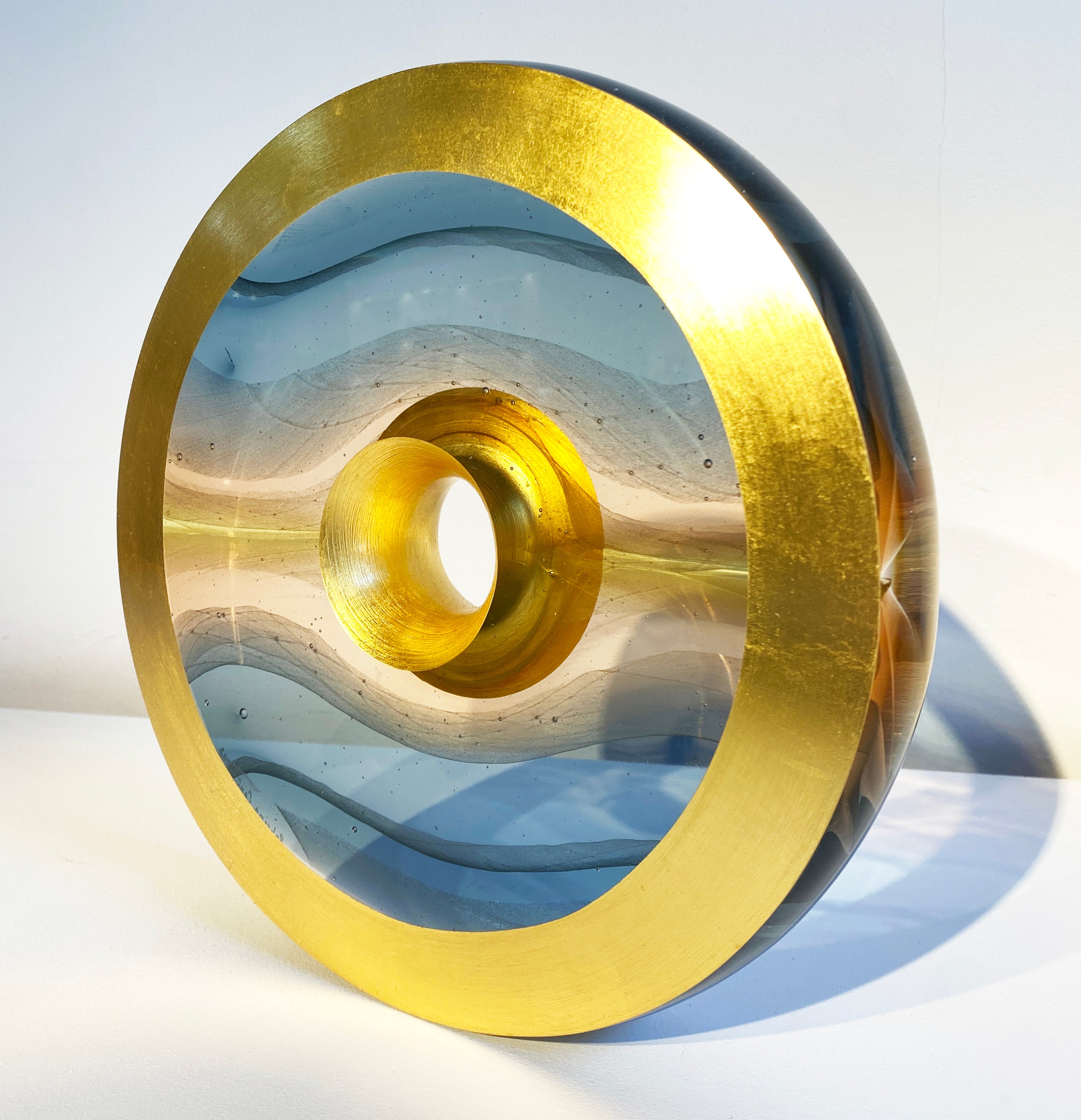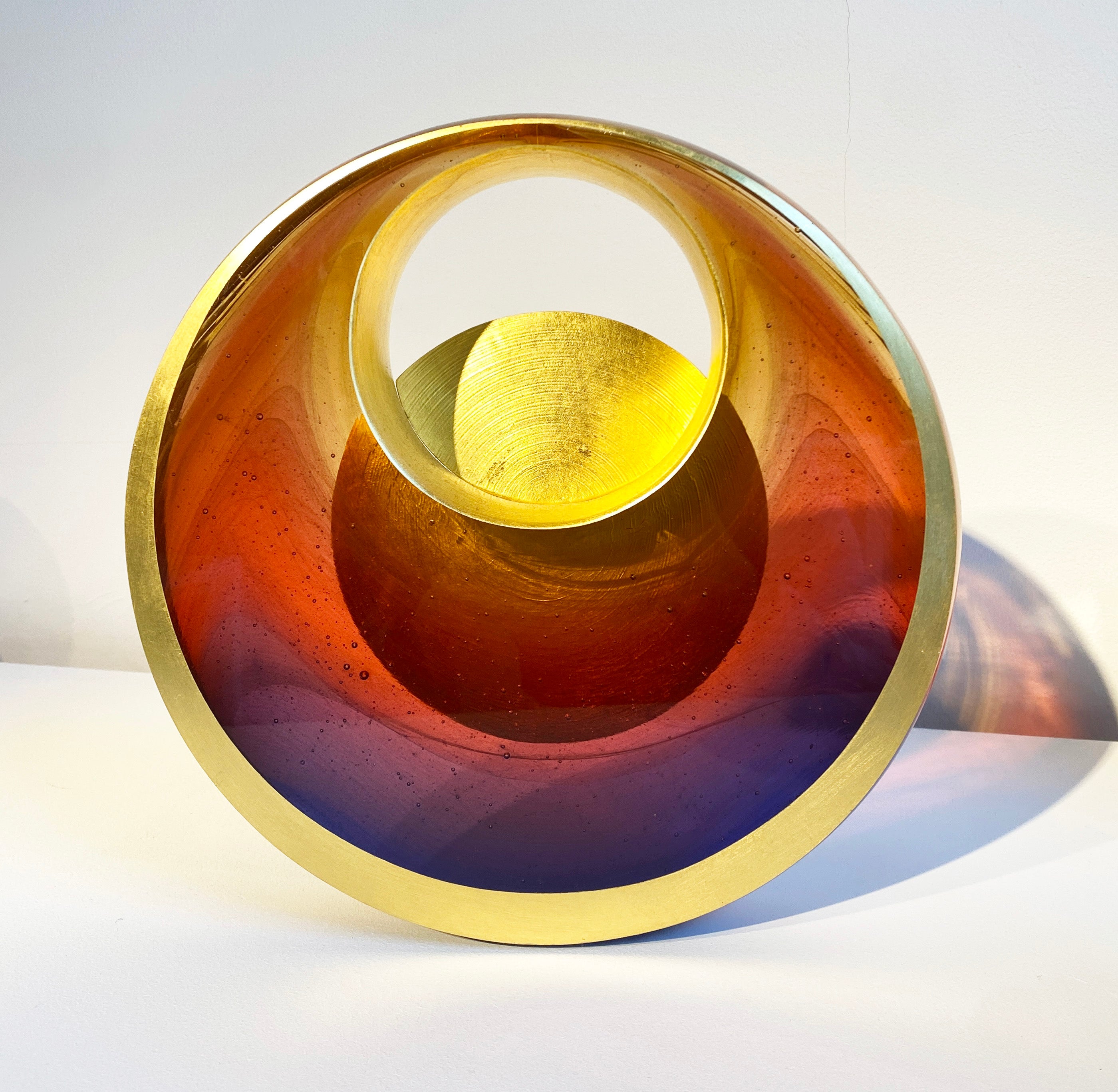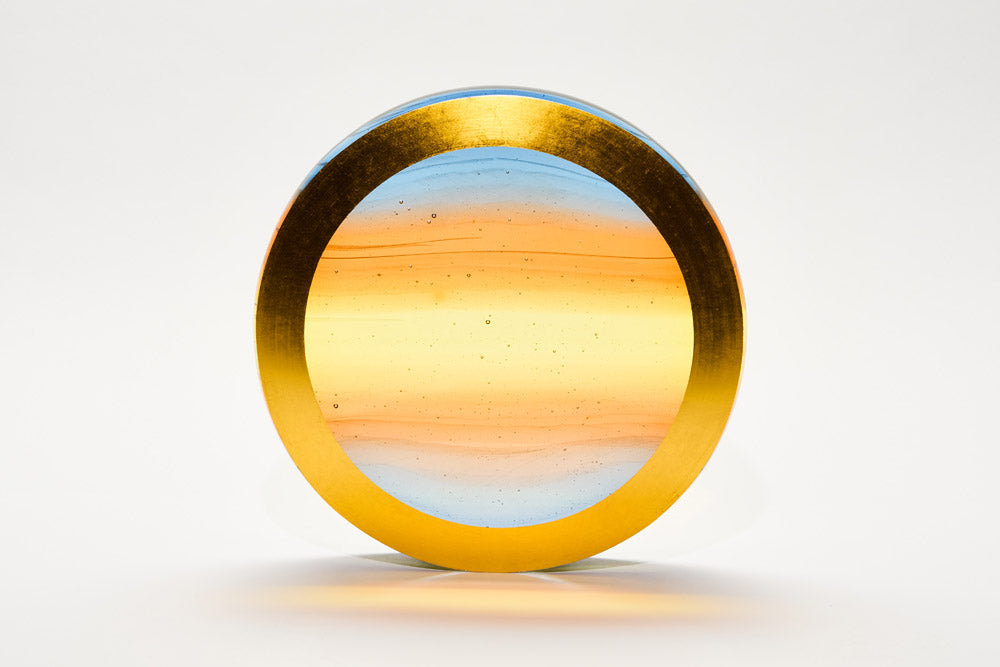I had the pleasure of sitting down with the phenomenally talented, Sabrina Cant to discuss her artworks for London Glassblowing's COLLECT 2022 exhibition. Speaking about her complex forms, blend of colours and detailed patterns, together we delve deeper into her influences, techniques and future plans.
Has glass always been your preferred medium? Have you ever experimented with other art forms?
It’s always been glass. In college I trained on a ceramics and glass course, with the intention of learning the intricacies of ceramics as I loved the technical processes and modelling of this medium. Through this, I discovered casting and coldworking (changing the shape or surface texture of glass using tools and processes that do not rely on heat) and have been hooked ever since - that was nearly 25 years ago! I did try glassblowing, but found it is not my preferred way of working as it is so immediate and requires you to make so many quickfire decisions. It’s the detailed, technical challenges of kiln formed glass that I’m really drawn to. Despite working with it for such a long time, I definitely still have a love / hate relationship with the medium - in fact I even keep an early example of my artwork that didn’t quite succeed the way I had hoped as a reminder of the unpredictable nature of glass.

To what extent do you design your artworks?
It is really difficult for me to draw or design exactly how an artwork will appear as glass always has the final say! The final appearance of an artwork depends upon the way the glass flows and to what level it is controlled. My newest artworks include cores meaning I can control the direction of the glass. I can't control it totally, but I can visualise the flow of the glass as it heats and have a vague idea of the final result.
With The Sun is God II, the glass continued flowing until it reached the top of the mould in the middle. This ultimately made the artwork more dynamic as I let the glass flow in a more natural way.
I can spend three months casting, modelling and polishing on a single piece and a bubble could appear and ruin the entire work. When showing it to someone else, they may not notice the bubble but for me I can’t use that piece of glass anymore. It helps if you have people around you to bounce ideas off of - sometimes there are happy accidents that can elevate the artwork to another level. That is one (of the many) things I miss about working at London Glassblowing from 2005 - 2007; as I am alone in my studio I do not always have a chance to discuss designs with other artists.
Initially I did create drawings and watercolours of what I envisioned the final piece to look like, but now I collage different elements together, such as golden circles and different textured paper. This helps me to figure out the final form of the work in a less concrete way - you never know when inspiration may hit!

What is your main inspiration?
Over the past few years my main inspiration has come from my own artworks and 3-dimensional pieces. I often adapt a piece during its making process, changing and experimenting with different shapes and colour formations - frequently referring back to my own artwork to see how I can develop my ideas. I start with glass blocks in different colour combinations and use them as a sketching pad, comparing different colour palettes with varying degrees of texture and vibrancy to finalise what will work for the piece. I am not limited in this process as I can make a number of pieces from these colour palettes; I can dilute the colours with clear glass or make the colours more intense by adding another coloured glass block.
You mentioned earlier that you begin with colour palettes, are you able to elaborate on your artistic process?
My artworks are all cast pieces, meaning I create moulds for the glass to fill and take their shape from. I first create a reusable rubber mould to create a plaster mould, which I will then use for the glass. Producing the perfect mould can sometimes take multiple attempts, especially if I have added a complicated element such as a hole. For example, I had to create a number of moulds for Algonquin Night because the hole was off centre and the wrong height in my first try.
Although the shape is really important, I primarily work from colour. If I control the piece too much from the beginning, it could result in an unsuccessful artwork… the colour may not work with the shape or maybe the glass needs more texture. Sometimes I get as far as the glass being ready to put into the circular mould but until I've seen the colours together, I don't know which form is going to work quite right. This is why I create so many moulds. It is important to keep my options open.
Occasionally when something unexpected happens, it allows me to take more risks with the work. I was so happy with the colour and appearance of Algonquin Night after its initial firings that it was a risk for me to place it into a new mould shape that I hadn’t explored before. That’s what I love about my disc pieces - I am not continuously recreating the same thing and I constantly experiment with the shape, texture, colour and type of gold. I am inspired by them and don’t limit myself. Making a disc piece can take 4-5 weeks, but it’s better to make a few at a time so I am continuously inspired throughout the process.

Your precious work has often been inspired by celestial bodies. Has this always been an inspiration to you?
Space and other worlds have always been an inspiration to me. The disc pieces stem from the idea of portals and what we can experience - they represent natural phenomena such as the night sky or a beautiful sunset. The Sun is God II, one of the artworks that I created for COLLECT, was inspired by one of my favourite artists, Joseph Turner’s last words. Allegedly, his final breath was The Sun is God. It seems pretentious at first but the more I think about it, the more I agree… the sun IS god, it is everything and the reason we exist. Although I’m not a religious person and my artworks are not religious, my artworks explore the potential of something being ‘out there’. The addition of the hole in The Sun is God II alludes to another dimension, travelling through and searching for answers. The journey is a venture into the unknown. The golden highlight elaborates this and brings it to the forefront of your mind as it has such a direct link with space.
When did you first introduce gold to your works?
Quite early on. The very first piece I created was called Prosperity of Night and it was born from the richness of night and the wonderful things that happen while we’re asleep. The gold relates to the exuberance of life and nature. Although I have created artworks without the addition of gold or precious metals, I love the experimentation and risk that the material brings - I am beginning to use it in many of my upcoming artworks.
We would love to welcome you to our Bermondsey Street Gallery where we have a selection of Sabrina’s artworks available.
Interview Conducted by Isabel Gilchrist
Article Structure by Isabel Gilchrist




